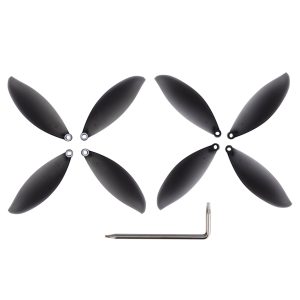Drones have become incredibly popular in recent years, capturing stunning aerial footage and providing exciting recreational opportunities. However, with the increasing number of drones in the sky, the risk of collisions and accidents has also risen. To address this concern, drone manufacturers have been actively developing and implementing collision avoidance systems in their consumer drones. These innovations aim to enhance safety, prevent accidents, and provide a worry-free flying experience for drone enthusiasts.
One of the most remarkable advancements in drone collision avoidance systems is the use of obstacle detection sensors. These sensors, typically placed on the front, back, and sides of a drone, use various technologies such as ultrasonic, infrared, or laser to detect objects in the drone’s flight path. When an obstacle is detected, the collision avoidance system sends signals to the drone’s flight controller, prompting it to adjust its course or hover in place to avoid a potential collision.
Furthermore, many consumer drones now come equipped with advanced software algorithms that analyze the incoming sensor data in real-time. These algorithms enable the drones to make intelligent decisions and adapt their flight path accordingly. For example, if a tree suddenly appears in front of a drone while it’s flying forward, the collision avoidance system can instruct the drone to either ascend or initiate a lateral movement to avoid the incoming obstacle.
Some manufacturers have taken collision avoidance systems even further by integrating artificial intelligence (AI) capabilities into their drones. These AI-powered systems learn from previous flight experiences and improve their obstacle detection and avoidance abilities over time. By continuously analyzing their surroundings and utilizing machine learning algorithms, these drones become better at identifying potential obstacles and predicting their behavior. This technology is especially useful when flying in complex environments with many dynamic elements, such as crowded parks or urban areas.
Drone pilots can also benefit from another innovation in collision avoidance systems: geofencing. Geofencing is a virtual barrier that can be set up around certain areas using GPS coordinates. When a drone equipped with geofencing capabilities approaches a restricted area or a no-fly zone, the collision avoidance system restricts its movement and prevents it from entering the prohibited space. Geofencing can be a valuable tool for preventing drone collisions near airports, military bases, or other sensitive locations.
Although collision avoidance systems greatly enhance safety in drone operations, it’s important to remember that they are supplementary to the pilot’s responsibility and should not be relied upon entirely. Pilots should always maintain situational awareness and be prepared to take manual control of the drone when necessary. Additionally, collision avoidance systems may not be effective in all circumstances. Factors such as poor visibility, extreme weather conditions, or technical malfunctions may limit their effectiveness.
To wrap it up, innovations in collision avoidance systems have revolutionized the consumer drone market by ensuring safer and more reliable operations. Drone enthusiasts can now enjoy the thrill of flying without worrying about potential collisions with obstacles or other aircraft. As technology continues to evolve, we can expect further advancements in drone collision avoidance systems, enhancing both safety and the overall flying experience.
